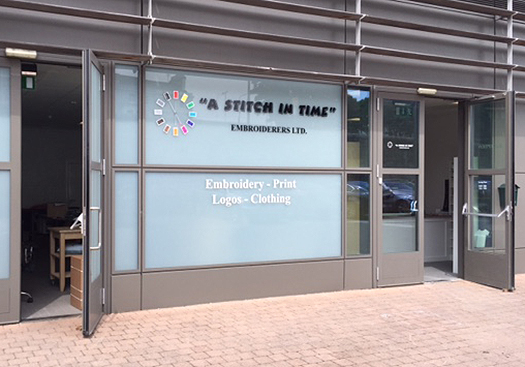Displaying items by tag: trade news
Decision on £100m Holyhead Marina is Finally Imminent
#HolyheadMarina? - After a near two year delay in the project, a decision on whether a £100 marina in Holyhead Port can move ahead is expected to be made next month.
According to the Daily Post, Conygar Stena Line want to build 326 homes, a 500-berth marina, retail, leisure, restaurants, hotel and office space, on Newry Beach, Holyhead .
The £100m project received planning permission in 2012 but opponents from the Waterfront Action Group submitted a ‘village green’ application for the seafront site to Anglesey council in February 2014.
If successful it would prevent any building taking place at the site and kill off the project.
For much more on the project on Anglesey, click here
Testing The Latest Westwood Cruiser On Lough Erne
#Cruising - Westwood's latest A405 cruiser was recently put through her paces by Motorboat & Yachting on a recent two-day visit to Lough Erne.
It's been all change for the cruising marque in recent times, keen to shake off its "somewhat stuffy image" since the yard moved to Enniskillen in 2013.
And Jack Haines' video feature on the company's flagship makes those efforts abundantly clear – taking in the idyllic surrounds of Lough Erne between Carrybridge and Enniskillen along the way.
Monaco Yacht Show Celebrates 25th Anniversary
#MonacoYachtShow – This is a special year for the Monaco Yacht Show as the prestigious event celebrates its 25th anniversary. The 2015 show, likewise of the previous quarter century is host to the world’s most exclusive gathering of extraordinary large superyachts, writes Jehan Ashmore.
The principality on the Côte d'Azur is the place to be seen and according to the show’s marketing is where the ‘House of Fine Yachting’ is on full display. Motoryachts lengths range from a modest 30m and up to the superyachts league of 80m. In addition to sailing yachts that are impressive with exhibitors of up to 56m. The four-day show that began mid-week concludes tomorrow, Saturday 26 September.
Around 500 exhibitors are nestled in Monte Carlo’s harbour of the Port Hercules, where world leading luxury yachting companies, among them the trendiest superyacht builders, yacht designers, luxury manufacturers are gathered. In addition the most important brokerage houses. All this against the backdrop of the azur seas of the Mediterranean.
The show has the privilege of benefiting from the recognition and the support of Prince Albert II of Monaco. Earlier this year, Afloat.ie reported a reception held in the Yacht Club de Monaco (YCM), where Prince Albert marked the occasion of the twinning of YCM and the Royal Cork Yacht Club.
Last year, the motoryacht, M.Y. Katrion of almost 40m visited several Irish ports. Among them Cork City Marina which accommodated the impressive 10-guest, Feadship built vessel.
After her summer visit, the 401 tonnes Katrion returned to sunnier climes as she made an appearance as an exhibitor at last year’s Monaco Yacht Show.
#TradeNews - A local business that began with one sailor's enthusiasm over 20 years ago has now moved back to a Dun Laoghaire location under another another sailor's renewed vision.
Martin Byrne, a former Commodore of the Royal St George Yacht Club and a three-time Dragon National and Edinburgh Cup champion, is the new owner of the long-running and iconic business A Stitch In Time Embroiderers Ltd.
Originally founded on the ideals of Simon Nolan of the Royal Irish Yacht Club, who aimed to provide a service to sailors in Dun Laoghaire where they could personalise their club or event clothing, Simon's brother David Nolan subsequently took over the business and moved it to Monkstown Farm.
The embroidery works and services developed over this time, but the sailing connection never diminished.
After David's passing, his son Markham ran the business for two years before Martin Byrne took over. Under Byrne's direction, the corporate and business aspect of the services provided by A Stitch In Time continued to develop.

A Stitch In Time's new premises in the heart of Dun Laoghaire's sailing community
Just recently, A Stitch In Time returned to where it all began, relocating to the Irish Lights Building in Dun Laoghaire Harbour in what's already being regarded as a major new step for the company – while also getting back to the roots of its business with the yacht clubs in Dun Laoghaire and throughout Dublin Bay.
Check out A Stitch In Time Embroiderers Ltd on Facebook or at www.astitchintime.ie
Domestic Growth Offsets Difficult Export Boat Market Says UK Trade Body
#Trade - Irish yacht brokers were among a range of smaller firms enjoying some buoyant trade at last week's London Boat Show.
And it's this growth within the domestic UK and Ireland market that's keeping the marine industry afloat as Britain's export market faces another difficult year, according to the Guardian.
Domestic sales have offset an 8.7% fall in foreign sales revenues across the leisure boat, small commercial vessel and superyacht markets, claims trade body the British Marine Federation (BMF).
Taking the blame for this are continuing financial troubles in the eurozone and what the industry says is Westminster's failure to provide expected funding to the BMF to attract overseas deals at shows like London and beyond.
The trade body also points out that the renewed focus on domestic sales runs against the UK government's push towards manufacturing for export.
The Guardian has more on the story HERE.
Yacht Market Gets A Boost As British Buyers Splash The Cash
#TradeNews - Yacht sales are on the upswing in Britain, with one superyacht broker reporting five deals in a single week for a total of a whopping £32 million (€39.9 million), according to Mail Online.
While mega-rich elites in the Middle East made up the bulk of the buyers during the lean years of the recession, now the western market is re-emerging - with the latest sales going to a German, an American and two wealthy Brits.
The new buyers, from brokerage Edmiston, are following the trail blazed by F1 mogul Eddie Jordan, who recently took the keys to his 155-foot superyacht that was revealed earlier this year by manufacturer Sunseeker.
And all this is in addition to a reputed 15% rise in luxury yacht charters, fuelling an insatiable appetite for opulence on the waves.
Mail Online has much more no the story HERE.
Brand New 'Superyacht' Transits Irish Sea Bound for Gibraltar and Med-Charter Cruising
#SuperYachtIrishSea-Brand new superyacht, Astra, a 55m (180ft) newbuild from Dutch shipyard Amels, made a mid-way passage through the Irish Sea last week and which saw the 672 tons luxury vessel head for Gibraltar, writes Jehan Ashmore.
The ultra-sleek lines of the Caymen Islands flagged vessel are styled by Tim Heywood Design and her interiors are by Laura Sessa Romboli where her 10 guests will be pampered throughout and looked after by a crew of 7 and a master skipper.
Superyacht features are an owner's master suite fitted with a folding balcony, as for guest accommodation for 8, there are four staterooms, including 2 double cabins and 2 twin cabins.
Her on board ambiance of timeless styling, beautiful furnishings and sumptuous seating features throughout are created to enhance elegance and a comfortable atmosphere.
Astra has an impressive range of day-time and evening leisure facilities and entertainment amenities making her ideal for the charter yacht market for family and hosting social occasions. This is where her Main Deck Saloon will make use for such gatherings as from here there are two balconies providing easy access to the open-sea air.
While the enlarged Sun Deck – at 25 metres long has a luxurious space of 155sq metres – and as claimed by Yacht Charter Fleet's website (click here), she could make a strong case for being the largest sun deck you'll find on any 55-metre. In addition to the customary access of vessel tender to reach secluded places.
Astra is a semi-custom Amels 180 displacement yacht launched this year. Amenities include a pair of jacuzzi's, a beach club, BBQ, swimming plat-form, steam-room and of course air conditioning throughout.
She was built in Vlissengen, the shipyard is part of the Damen Group which also built the ILV Granuaile for the Commissioners of Irish Lights in Romania.
Within the 180 design range there is also a 'Touch & Go' helipad which accepts a 2,000kg take-off weight. Noting that those wanting to visit the Amels Dutch shipyard can also visit by helicopter!.. as there is an approved onsite heliport.
She has a range of 4,500 nautical miles. To get about her Mediterranean cruising grounds (see sea areas listed below) this will not be an issue, as she has a cruising speed of 13 knots, though this can be boosted to 15.5 knots, if not up to 16 knots top!
Should sea-states not be condusive to hosting a cocktail event, this need not be a concern for those privately cruising on Astra along the azur seas off Monte Carlo or off Croatia on the Adriatic. As Astra has an 'at anchor stabilisers' system which works at zero speed, increasing on-board comfort at anchor and even during rough waters.
You may not suffer sea-sickness, but if you are still feeling home-sick, there is use of a Wi-Fi. Should you also be required to keep track of your day-to-day business affairs, communicating with the outside world is still an option through this form of 'connectivity'.
Astra's charter cruising grounds of the central Med (from west to east) are Ibiza, Corsisa, Sardinia, French Riviera notably St. Tropez, Cannes, Monaco, the Italian Riviera and as previously mentioned Croatia.
All of this commands an extremely deep-pocket should this ever contemplate a charter. So what kind of euros or buck will this set you back?
For the summer season, charter rates start from €275,000 ($377,799) a week plus expenses!
New Location Means More Business For Sligo RIB Specialists
#TradeNews - Afloat.ie first reported in March last year on Inland Inflatables Services' planned relocation to larger premises in Collooney, Co Sligo.
And now the move is finally going ahead, as the RIB service business - one of the largest in Ireland - gets ready to set up in an impressive 8,000 square foot space as it celebrates its 10th anniversary in 2014.
As company head Ronan Keys told the Sunday Business Post recently: "Some people thought I was a bit crazy to make the move out of Sligo town to Collooney as such a time in the economy."
But as Keys adds, the numbers made sense, as the fall in property prices made purchasing the larger out-of-town space a much better deal, and in turn will allow the company to take on more business - and more staff.
Sunsail's Move Away From Portsmouth Puts Jobs At Risk
#TradeNews - BBC News reports that nearly 100 jobs could be at risk in Portsmouth as sailing holiday firm Sunsail plans to relocate its operations to London.
The company, which specialises in sailing tourism and boat rentals, says it is consulting individually with staff as it consolidates with other brands under the Specialist Holidays Group umbrella - including yacht operator The Moorings - at a new headquarters in Surbiton.
However, the company has confirmed that its UK operations of schools and events will remain in Port Solent and are not affected by the relocation plans.
Rob Doyle Launches New Design Company
#Trade - Kinsale-based yacht designer Rob Doyle has announced the 'takeover' of the staff and offices of Ron Holland Design.
According to Superyacht Times, the 42-year-old issued a statement on Wednesday (27 March) outlining the changeover to his new yacht design, naval architecture and engineering business Rob Doyle Design, which is expected to take the previous company's work in a new direction with new design and refit projects.
"To have had the opportunity to work with Ron Holland over the past 18 years has been both a rare privilege and an eye opener as to what is possible," said Doyle.
"The experience I have gained and the lessons I have learnt make me want to explore more paths and develop further exciting projects with my team and build on Ron’s yacht design legacy."
Ron Holland, meanwhile, is still very much in the game - concentrating on his new centre of activity in Vancouver, where his company opened an office two years ago.
The mentor commented: "I look forward to continuing to collaborate with Rob on the projects that will carry the Ron Holland label and I also wish him all the best for the future of his own design firm and its projects."
Doyle has worked on a number of memorable projects under the Ron Holland brand, including the world's largest sloop Mirabella V and Ethereal, considered the most technically advanced superyacht yet developed.
Superyacht Times has more on the story HERE.


































































